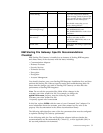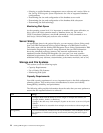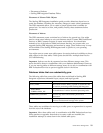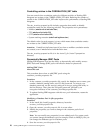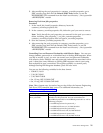
v Selecting a certified database management server software and version. Refer to
the Sterling B2B Integrator System Requirements for a list of supported database
configurations.
v Determining the size and configuration of the database server node
v Determining the size and configuration of the database disk subsystem
v Determining the disk technology
Monitoring Disk Space
At the operating system level, it is important to monitor disk space utilization, as
this is one of the most common causes of database freeze up. On various
UNIX/Linux-based platforms, run the df command as a line command or in a
shell script. Various third-party tools are also available.
Server Sizing
At appropriate times in the project lifecycle, you can request a Server Sizing study
from your IBM Professional Services Project Manager or a IBM Sales Executive.
This study starts with the Sterling B2B Integrator Server Sizing Questionnaire. IBM
Performance Engineering creates a sizing document that provides information
about the estimated processor, memory, and network requirements for the
standard/baseline Sterling B2B Integrator. On your part, you must consider
additional requirements such as other workloads on the same node (for example,
additional third-party software, customization, performance monitors, and so on).
Storage and File Systems
This section covers the following topics:
v Capacity Requirements
v Use of Native File Systems
v Monitoring Disk Space
Capacity Requirements
Your disk capacity requirement is a very important input to the disk configuration
planning process. This involves many considerations to ensure survivability,
manageability, scalability, and performance.
The following table provides information about the tasks that you must perform to
ensure that the required behavior is achieved.
Goal Strategy
Survivability
v Configure disks with the ability to survive single or multiple disk failures (for
example, RAID-1, RAID-5, or RAID-10).
v Configure the disk array with multiple I/O paths to the server to survive I/O path
failures.
v Configure disks to be accessible from multiple server nodes to tolerate single-node
failures.
Manageability If you have limited-time windows to back up the database, select techniques such as
array snapshots or SAN-based (storage area network) mirroring that allow logical
backups.
14 Sterling B2B Integrator: Performance Management






